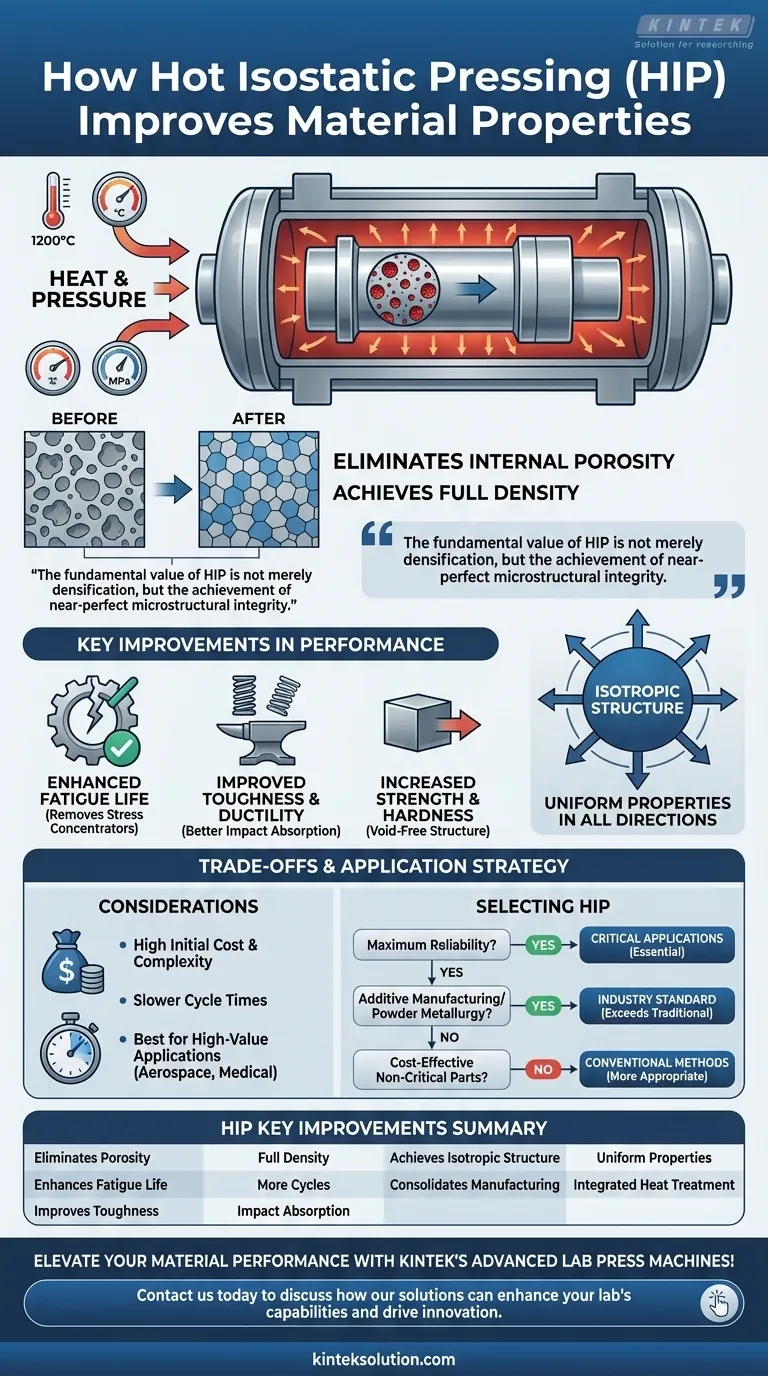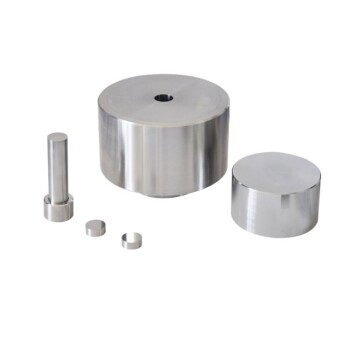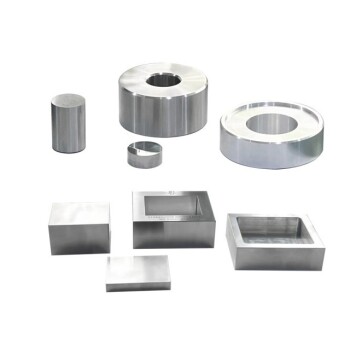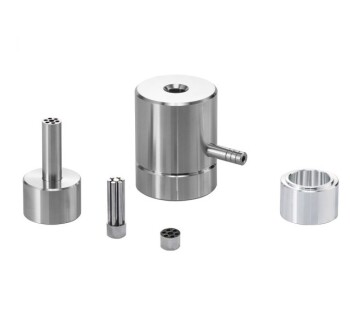At its core, Hot Isostatic Pressing (HIP) improves material properties by subjecting a component to intense heat and uniform, high-pressure gas. This process simultaneously eliminates internal microscopic voids and fuses particles together, creating a fully dense material with a superior internal structure. The result is a dramatic enhancement in mechanical performance, particularly in fatigue life and toughness.
The fundamental value of HIP is not merely densification, but the achievement of near-perfect microstructural integrity. By removing the internal defects where failures begin, HIP transforms a good material into a highly reliable, high-performance one.
The Core Principle: Eliminating Imperfections
The unique power of HIP comes from its ability to heal defects from the inside out. This is achieved through a precise combination of three critical factors: high temperature, high pressure, and isostatic application.
How HIP Combines Heat and Pressure
During the HIP process, components are placed inside a high-pressure vessel which is then heated. The temperature softens the material, making it malleable on a microscopic level. Simultaneously, the vessel is filled with an inert gas, like argon, and pressurized. This gas pressure acts uniformly on all surfaces of the component.
Eradicating Internal Porosity
This combination of heat and pressure forces the material to plastically deform and creep, effectively collapsing any internal voids, pores, or microscopic cracks. These defects are common in cast parts or components made from powder metallurgy and additive manufacturing (3D printing). By eliminating these pores, you remove the natural starting points for fatigue cracks and material failure.
Achieving Full Theoretical Density
The ultimate goal of this process is to achieve a density that is as close as possible to 100% of the material's theoretical maximum. A cast or powder-based part might only reach 95-99% density, with the remaining volume being performance-limiting voids. HIP effectively closes this gap, creating a solid, homogenous structure.
From Microstructure to Performance
Eliminating defects at the microscopic level has a direct and significant impact on the material's real-world performance.
A Uniform, Isotropic Structure
Because the pressure is isostatic (equal from all directions), the densification occurs uniformly. This avoids the directional weaknesses that can be created by other methods like uniaxial (one-direction) pressing. The result is an isotropic material, meaning its mechanical properties—like strength and ductility—are consistent in all directions.
Drastic Improvements in Mechanical Properties
With a fully dense and uniform microstructure, materials exhibit superior performance characteristics.
- Fatigue Life: The removal of internal pores, which act as stress concentrators, dramatically increases the number of cycles a part can endure before failing.
- Ductility and Toughness: Fully densified materials can deform more before fracturing and are better able to absorb impact energy.
- Strength and Hardness: A structure free of voids is inherently stronger and more resistant to wear.
Consolidated Manufacturing Steps
Modern HIP systems can integrate heat treatment and aging cycles directly into the cooling phase of the process. This consolidates multiple manufacturing steps into a single, more efficient operation, reducing lead times and ensuring consistent material properties.
Understanding the Trade-offs
While powerful, HIP is not a universal solution. Acknowledging its limitations is key to using it effectively.
High Initial Cost and Complexity
HIP equipment represents a significant capital investment. The process requires specialized knowledge to operate safely and effectively, making it a high-cost procedure reserved for components where performance is paramount.
Slower Cycle Times
Compared to conventional manufacturing methods like casting or forging, HIP is a batch process with relatively long cycle times. Heating, pressurizing, holding, and cooling can take several hours, impacting overall production throughput.
Best Suited for High-Value Applications
The cost and time associated with HIP mean it is most justifiable for critical, high-performance applications. It is often considered overkill for low-cost, non-critical parts where the inherent properties of standard materials are sufficient.
Making the Right Choice for Your Application
Selecting HIP is a strategic decision based on the required performance and reliability of the final component.
- If your primary focus is maximum reliability and fatigue life (e.g., aerospace engine parts, medical implants): HIP is essential for eliminating the micro-voids that are the primary initiation sites for failure.
- If your primary focus is improving parts made via additive manufacturing or powder metallurgy: HIP is the industry standard for densifying these components to achieve properties that meet or exceed those of traditional wrought materials.
- If your primary focus is densifying a "green" powder compact at lower temperatures: Cold Isostatic Pressing (CIP) or Warm Isostatic Pressing (WIP) may be more suitable and cost-effective preliminary steps.
- If your primary focus is cost-effective mass production of non-critical parts: HIP is likely unnecessary; conventional methods like casting, forging, or uniaxial pressing are more appropriate.
Ultimately, understanding the role of HIP allows you to strategically elevate material performance precisely where it matters most.
Summary Table:
| Key Improvement | Description |
|---|---|
| Eliminates Internal Porosity | Removes voids and defects for full density |
| Enhances Fatigue Life | Increases cycles to failure by reducing stress concentrators |
| Improves Toughness and Ductility | Allows more deformation and impact absorption |
| Achieves Isotropic Structure | Uniform properties in all directions |
| Consolidates Manufacturing | Integrates heat treatment for efficiency |
Elevate your material performance with KINTEK's advanced lab press machines! Whether you're in aerospace, medical implants, or additive manufacturing, our HIP systems deliver fully dense, reliable components by eliminating internal defects. Contact us today to discuss how our solutions can enhance your lab's capabilities and drive innovation.
Visual Guide

Related Products
- Automatic High Temperature Heated Hydraulic Press Machine with Heated Plates for Lab
- Heated Hydraulic Press Machine with Heated Plates for Vacuum Box Laboratory Hot Press
- Automatic Heated Hydraulic Press Machine with Hot Plates for Laboratory
- Heated Hydraulic Press Machine With Heated Plates For Vacuum Box Laboratory Hot Press
- Laboratory Manual Heated Hydraulic Press Machine with Hot Plates
People Also Ask
- What role does a heated hydraulic press play in powder compaction? Achieve Precise Material Control for Labs
- Why is a hydraulic heat press critical in research and industry? Unlock Precision for Superior Results
- How are heated hydraulic presses utilized in material testing and sample preparation? Enhance Your Lab's Precision and Efficiency
- What is a heated hydraulic press and what are its main components? Discover Its Power for Material Processing
- What industrial applications does a heated hydraulic press have beyond laboratories? Powering Manufacturing from Aerospace to Consumer Goods



















